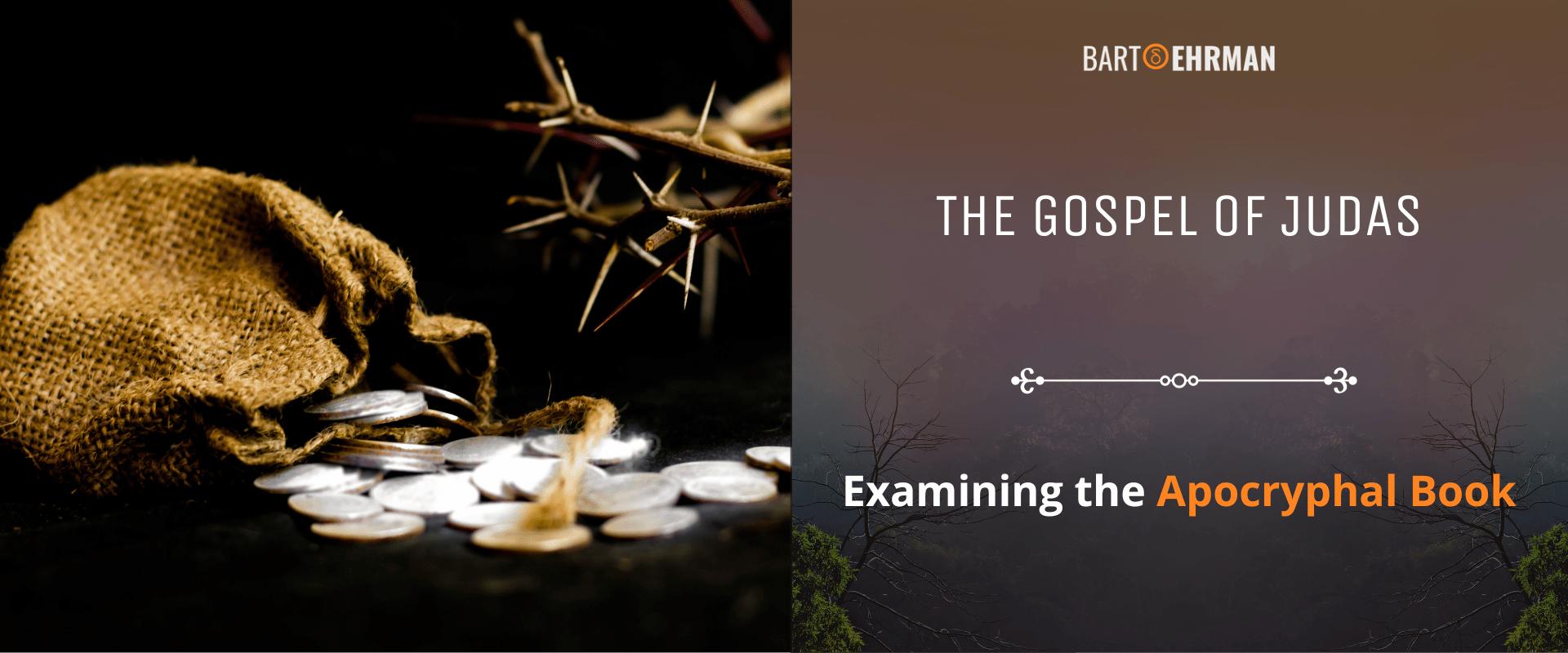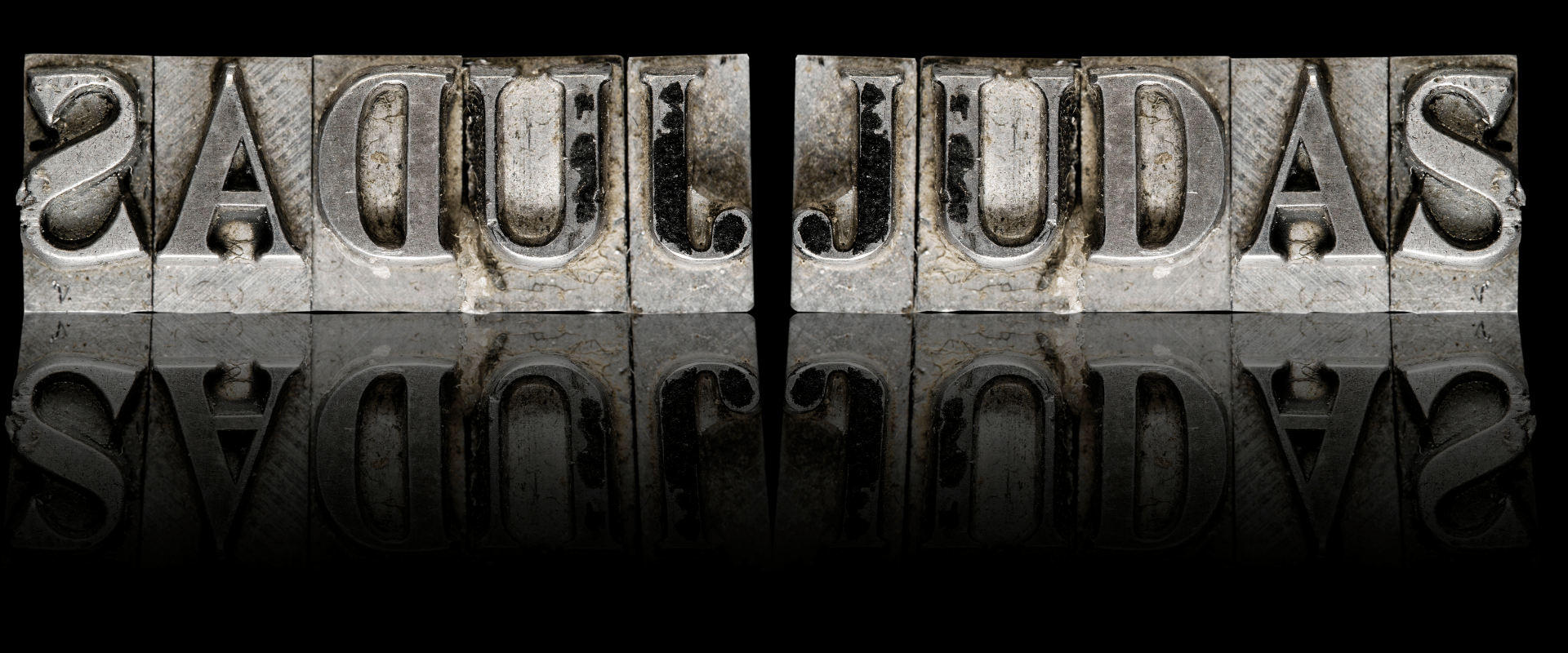Gospel of Judas: Examining the Apocryphal Book

Written by Marko Marina, Ph.D.
Author | Historian
Author | Historian | BE Contributor
Verified! See our guidelines
Verified! See our editorial guidelines
Date written: September 20th, 2023
Edited by Laura Robinson, Ph.D.
Disclaimer: The views and opinions expressed in this article belong to the author and do not necessarily match my own. - Dr. Bart D. Ehrman
During the spring of 2012, I eagerly watched the screen unfold a world of intrigue, secrets, and religious mysteries. The film that held me captive that day was "The Da Vinci Code," a cinematic adaptation of Dan Brown's gripping novel.
Little did I know that this experience would ignite a profound fascination with early Christianity and its enigmatic apocryphal gospels.
In this article, we’ll explore one of the most well-known apocryphal gospels - the Gospel of Judas. We’ll take a scholarly look at the Book of Judas, dissecting its unique features, and endeavor to place it within the context of the early Christian world.

What is the Gospel of Judas?
The Gospel of Judas is an ancient Gnostic text that provides a window into the diversity of the early Christian world. Unlike the canonical Gospels found in the Bible, this non-canonical (or apocryphal) Gospel presents a unique perspective on the relationship between Judas Iscariot and Jesus.
It portrays Judas not as a betrayer but as a trusted disciple who carried out Jesus's wishes. The Gospel of Judas offers insights into Gnostic beliefs and is considered an important historical and theological document, although it is not included in the New Testament.
Discovery of the Book of Judas: A Glimpse into the Hidden Past
In the 1970s, a manuscript containing the Gospel of Judas was discovered. However, it wasn't until 2006 that scholars finally published it. This delay, though, should not be attributed to their negligence. Instead, a chain of intermediaries and antiquities dealers hindered the scientific examination and study of the text.
Its publication in the spring of 2006 surprised some, but not historians of Christianity. They had long known that the existence of such a Gospel was possible. Around 180 C.E., Bishop Irenaeus briefly mentioned a gospel with this title. He claimed that a group of Christians named Gnostics had fabricated it.
When was the Gospel of Judas written? Irenaeus’ reference helps us answer this question. James Robinson observes in The Gospel of Judas in Context, that the usual dating of the Book of Judas is around the middle of the 2nd century C.E.
Nonetheless, this text proved to be worth the wait. Unlike the Gospels that made it into the Bible, the Book of Judas doesn't provide extensive details about Jesus' life and ministry. Instead, it presents a collection of dialogues between Jesus and his disciples.
Moreover, the Gospel of Judas doesn’t claim to be written by Judas Iscariot. It’s not a “Gospel according to Judas” but a gospel about Judas and his insight into Jesus’ identity and his role in salvation.
In other words, it’s a narrative of a special revelation Judas received from Jesus. As the text says: “This is the secret message of judgment Jesus spoke with Judas Iscariot over a period of eight days, three days before he celebrated Passover.”
Are you interested in the full Gospel of Judas’ text? Click the link and read this amazing source for yourself! If you want to download the Gospel of Judas’ pdf click here!
FREE COURSE!
WHY I AM NOT A CHRISTIAN
Raw, honest, and enlightening. Bart's story of why he deconverted from the Christian faith.
Over 6,000 enrolled!
The Secret Knowledge and the Gospel of Judas
The opening scene serves as a microcosm of the text's overarching message. It unfolds with Jesus encountering his disciples as they engage in a Thanksgiving or the Eucharist.
His response is laughter, which perplexes the disciples. When questioned about it, Jesus clarifies, saying, “I'm not laughing at you. You're not doing this because you want to, but because through this your God [will be] praised.”
Jesus mocks this ritual and claims that disciples are only praising their God. This marks the initial hint that the Gospel of Judas aligns with Gnostic beliefs. Gnostics believed that the God revered by "mainstream" Christians (the God of the Old Testament) is distinct from the ultimate deity who dispatched Jesus to Earth.
Did You Know?
During the 2nd and 3rd centuries, Gnostic Christians represented a significant group that was only later marginalized and branded as "heretics"? Interested in learning more about this captivating chapter in early Christian history? Check out Bart's book, "Lost Christianities."
In response to Jesus' laughter, the disciples become incensed. He then challenges them: “If any of you is [strong enough] among humans to bring out the perfect Humanity, stand up and face me." None of the disciples dared to answer him. Except for Judas!"
Judas stands before Jesus and replies: "I know who you are and where you've come from. You've come from the immortal realm of Barbelo, and I'm not worthy to utter the name of the one who's sent you."
As it turns out, this was the answer Jesus was hoping for! According to the Gospel of Judas, Jesus is a divine being. He came from a divine realm above this cosmos. To be exact, he came from an eon called Barbelo. In the gnostic system, an eon is an emanation from the divine. And this eon comes from the ultimate or the highest God who can’t be named.
Judas as Jesus’ Special Disciple: Curse or the Blessing?
Since Judas, unlike the rest of the disciples, showed necessary insight, Jesus instructs him: “Come away from the others and I'll tell you the mysteries of the kingdom. Not so that you'll go there, but you'll grieve much."
This scene is modeled after the famous episode in the synoptic Gospels when Jesus asks the disciples “Who do you say that I am? (Mt 16: 13-23).” In both cases, Jesus poses a challenge to the disciples and in both cases, only one disciple (Peter and Judas) steps forward with a correct answer.
Additionally, in both instances, Jesus bestows upon that disciple a unique revelation. However, it's noteworthy that shortly thereafter, Jesus either condemns the disciple as Satan (as seen in Matthew's case) or as one who will not enter the Kingdom (as observed with Judas).
The author of the Gospel of Judas intends for the reader to recall the scene from Matthew and draw a parallel. In this apocryphal book, Jesus is identified as originating from the eon Barbelo. In the Gospel of Matthew, however, Peter responds to Jesus by proclaiming, "You are the Messiah, the Son of the living God."
To comprehend the contrast between Judas and Peter, we have to understand the difference between the two confessions of who Jesus is. This leads us directly to the core of the Gnostic theological system!

The Cosmos and the Creation in the Gospel of Judas
Jesus explains to Judas that the true God of all things is an invisible spirit that not even angels have seen. Even though no one can see him, this invisible spirit emanates from itself a series of lower manifestations of itself. The Gospel of Judas calls them “Eons”.
Only those humans who gain the knowledge (gnosis) can understand all the aspects of the highest God. Hence the name of this group of Christians! They are “Gnostics” because of their knowledge of the highest God.
Early in the narrative, Judas asserts that a series of additional eons emerged from Barbelo. One important eon is called Adamas. He is the heavenly model for the human being or Adam. Moreover, the Gnostics referred to the saved people (themselves) as the descendants of Seth. According to Genesis 4:25, Seth was Adam and Eve’s third son!
Have you ever wondered where the line between history and mythology in the Book of Genesis lies? Join a course “In the Beginning” by Dr. Bart Ehrman and find out more!
The Supreme God and the God of the Old Testament
Moreover, Gnostics held the belief that the cosmos we inhabit is distinct from the supreme God, who does not directly govern this world. Instead, this universe is impermanent and under the dominion of a lesser divine entity referred to by some as Nebro and by others as Yaldabaoth.
The higher divine realm, as the Gospel of Judas explains, appointed Yaldabaoth to rule over the material cosmos. Yaldabaoth, therefore, is the creator of this world. In other words, the God of the Old Testament worshiped by Jews and most Christians is not the ultimate God but an ignorant ruler who created both this world and the first human beings (Adam and Eve).
However, the higher Gods didn’t leave humans in complete servitude to Yaldabaoth. The angel Gabriel gave an additional spirit or the spark of divinity to the saved people (i.e. the Gnostics). In the Gospel of Judas Jesus notes: “God caused knowledge to be brought to Adam and those with him so that the kings of Chaos and Hades might not rule over them.”
Yaldabaoth is, therefore, the king of Chaos and Hades whom the saved people should be liberated from. In other words, he is not the true God! Despite that, he is the God to whom the disciples were offering Thanksgiving. So, Jesus was laughing because they were worshiping the wrong God!
Judas vs. Peter: Who Understands Jesus Best?
I bet your mind is spinning now from the complexity of the Gnostic theological system. Let’s present the summary of the Gospel of Judas by looking at the key differences between Gnostics and the proto-orthodox Church that favored the four canonical Gospels!
Proto-Orthodox Christians | The Gospel of Judas |
|---|---|
1. Jesus is the Son of the Old Testament God who is the creator of everything.
| 1. Jesus is a divine being who came from a higher God than the God of the Old Testament. |
This leads us to a crucial distinction between Judas and Peter. The Gospel of Judas consistently portrays all the disciples, excluding Judas, not just as misguided but as actively malevolent. According to this narrative, they are guiding individuals toward their spiritual demise.
In essence, the Gospel of Judas challenges the theology of proto-orthodox Christians and their assertions regarding the apostolic lineage of bishops. While these Christians legitimize their authority through figures like Peter and other disciples, the Gospel of Judas contends that they are worshiping the wrong deity.
Jesus, in this text, explicitly tells them, "Truly [I] say to you, no generation of the people among you will know me."
Judas’ Destiny: Hero or a Criminal?
In the Gospel of Judas, the only knowledgeable disciple is Judas. However, Jesus told him he wouldn’t enter the Kingdom of God. What does that mean? Is he going to be saved?
Both in the canonical and apocryphal Gospels, Judas plays a paradoxical role. In the canonical gospels, Judas betrays Jesus and is condemned for it. But, at the same time, what Judas did was a necessary part of God’s plan for the salvation of humans!
The Gospel of Judas holds a parallel perspective. On one hand, Jesus informs Judas that he must sacrifice "the human being" housing Jesus' essence. On the other hand, Judas' actions are prophesied to trigger a chain of events culminating in the downfall of Yaldabaoth and the restructuring of the universe.
Human beings with a knowledge of God will be raised to their true home in the divine realm. However, this cosmos won’t be destroyed. Instead, a new regime will emerge.
A new regime led by Judas. As it turns out, Jesus reveals to Judas that he will replace the Yaldabaoth as the God of this cosmos. It is a promotion but not to the divine realm where the Gnostics will dwell.
The Gospel of Judas as the Guiding Principle
Following Jesus' revelation, his divine essence departs from Earth. The narrative then transitions to the human Jesus in the upper room of a house, where he participates in the Last Supper with his disciples. Simultaneously, Judas meets outside with Jewish scribes and betrays Jesus in exchange for money. With this act, the Gospel of Judas ends!
The conclusion may appear abrupt and somewhat anticlimactic, but it represents a deliberate literary device. It directs the reader back to the canonical Gospels for the continuation of the narrative.
The Gospel of Judas communicates to its readers that they possess a newfound understanding of the authentic identity of Jesus. Armed with this insight, they are encouraged to revisit the canonical Gospels, where they can reinterpret the familiar accounts with a deeper and more accurate comprehension.
In this way, readers are offered the opportunity to escape the fate of Peter and become a member of an elite race of people with the special gnosis as their “passport” to salvation!
Summing Up Conclusions
In conclusion, the Gospel of Judas beckons us to venture into the depths of early Christian thought, where divergent beliefs and alternative narratives abound. Through its unique lens, we analyzed the contrasting roles of Judas and Peter and the Gnostic perspective on salvation and divine knowledge.
If you want to know more about the captivating world of early Christianity, you should join a course “The Unknown Gospels” by Dr. Bart Ehrman. As a renowned scholar, Dr. Ehrman provides a fascinating insight into the Gospels as historical sources. Click the link below and expand your knowledge of the early Christian world!
FREE COURSE!
WHY I AM NOT A CHRISTIAN
Raw, honest, and enlightening. Bart's story of why he deconverted from the Christian faith.
Over 6,000 enrolled!
